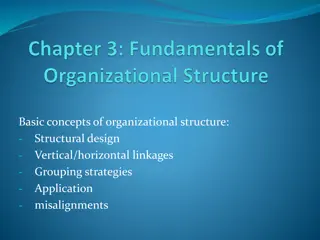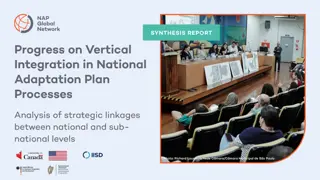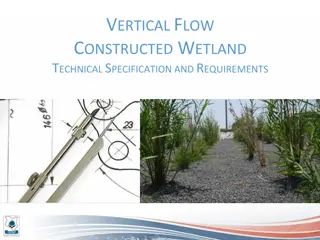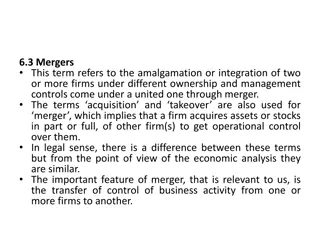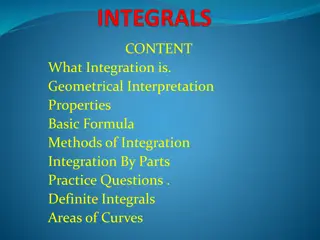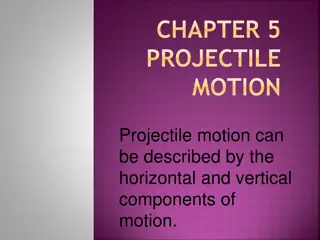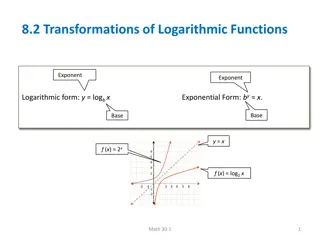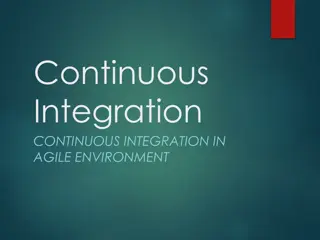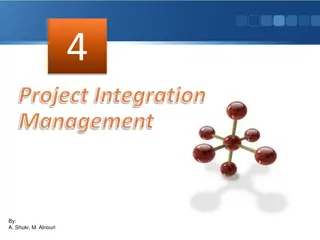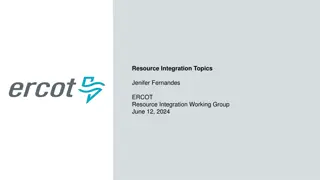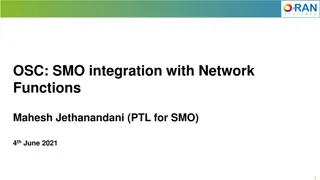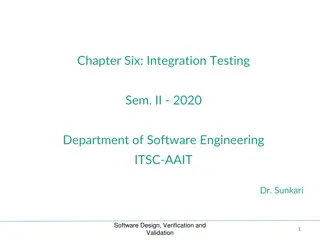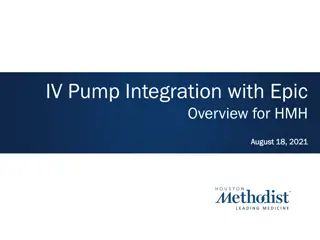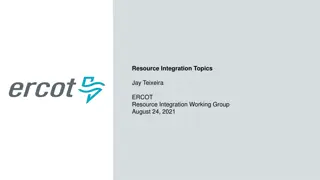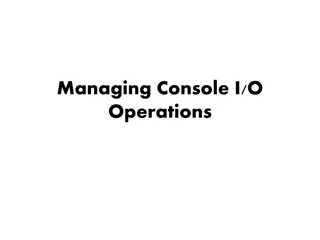Understanding Vertical Integration in Business Operations
Vertical integration in business refers to a firm's operations across multiple industries or stages of production, either through internal manufacturing or merging with other firms. This type of diversification enhances control over the production process, leading to efficiencies and market power. Vertical integration can be partial or complete, and firms may choose to integrate production and distribution activities based on their strategic goals. The integration of firms can be horizontal, vertical, or conglomerate in nature, with a focus on increasing market power and control over the value chain.
Download Presentation

Please find below an Image/Link to download the presentation.
The content on the website is provided AS IS for your information and personal use only. It may not be sold, licensed, or shared on other websites without obtaining consent from the author. Download presentation by click this link. If you encounter any issues during the download, it is possible that the publisher has removed the file from their server.
E N D
Presentation Transcript
6.2 Integration It refers to the operations by a firm in two or more industries representing successive stages in the flow of materials or products from an earlier to later stage of production or vice versa. Thus, it is a type of diversification but it may be looked as vertical concentration , and if the process takes place by merging of two different firms then it is vertical merger'. However, vertical integration is a popular term for all these. Essentially, it is the integration among intermediate products used in production of a commodity. It may be initiated in either way, i.e., a firm itself starts manufacturing all of them or different firms producing goods at different stages of the process and merge together.
No vertically integrated firms buy the inputs or services they need for their production processes from other firms. A nonintegrated firm may write long term binding contracts with the firms with which it deals, in which it specifies price, other terms, or forms of behavior. Such contractual restraints are called vertical restrictions. For example, manufactures commonly restrict their distributors by determining their sales territories, setting inventory requirements, and, where legal, setting the minimum retail price they can charge. or distribution
Some firms choose to vertically integrate and perform all production and distribution activities themselves. Other partially vertically integrates. For example, they may produce themselves but rely on others to market the products. Some firms are not vertically integrated, but buy from a small number of suppliers or sell through a small number of distributors. Any firm that engages in successive steps in its production process is at least partially integrated. For example, a restaurant that bakes its own pies instead of buying them readymade is partially integrated.
A firm that participates in more than one successive stage of the production or distribution of goods or services is vertically integrated. A nonintegrated firm may write long term binding contracts with the firms with which it deals, in which it specifies price, other terms, or forms of behavior.
6.2.1 Types of Integration Integration of firms may be either horizontal or vertical in nature, or conglomerate. Horizontal integration occurs when a business merges with or acquires another business. It is the acquisition of additional business activities at the same level of the value chain. Vertical integration is the process in which several steps in the production and/or distribution of a product or service are controlled by a single company or entity, in order to increase that company's or entity's power in the market place. The foregoing discussion focuses on vertical integration in particular.
Vertical integration involves joining together under common ownership a series of separate but linked production processes. Such a strategy is used by many enterprises to widen the boundaries of the firm and to enlarge its size. Vertical integration occurs in one of two ways. Forward vertical integration occurs when a business acquires another business, which brings it closer to the customer. Backward vertical integration move closer to its sources of supply.
Vertical integration does not necessarily imply that All the output of every stage is used only within the firm. sell some output at some stages All inputs are produced within the firm. It may suit the firm to buy some inputs at other stages, resulting in partial integration. Vertical integration in the business sense is the ownership by one firm of two or more vertically linked processes. The more stages owned and controlled by one firm the greater the degree of vertical integration.
6.2.2 Motives of Vertical Integration The various motivations can be categorized under four main headings: Efficiency gains in terms of technological joint economies. The ability to avoid imperfect markets. Distribution cost savings. Security and planning and avoidance of volatile markets. Porter suggested examining the advantages to a firm of pursuing a strategy of vertical integration under six headings: cost savings, increased communications, changed operations management and competitive differentiation. control, improved climate, organizational
6.2.2.1. The reasons for and against Vertical Integration There are at least three possible costs of vertical integration. First, the cost of supplying its own factors of production or distributing its own product may be higher for a firm that vertically integrates than one that depends on competitive markets which serve these needs efficiently. Second, as a firm gets lager, the difficulty and cost of managing it increase. The advantage of dealing with a competitive market is that someone else supervises production. Third, the firm may face substantial legal fees to arrange to merge with another firm. Because of these costs, firms vertically integrate only if the benefits out-weigh the costs.
There are at least six major advantages to integrating. i. Integration to lower Transaction costs. A firm may lower its transaction costs by vertically integrating. For example, the transaction costs of buying from or selling to other companies are avoided. There are four types of transactions in which transaction costs are likely to be substantial enough to make vertical integration desirable. They involve specialized assets, uncertainty that makes monitoring difficult, information, or extensive coordination.
A Specialized asset is tailor- made for one or a few specific buyers. It involves Specific physical capital which includes buildings and machines that can be used for only one or a few buyers; Specific human capital i.e. a firm may need workers specially trained in how the firm operates (specific human capital). Such as engineers, to produce a particular product. If it uses outside contractors as opposed to its own employees, opportunistic behavior is possible. If successive stages of a production process must be located adjacent to each other (that is, they involve site specific capital),
The second transaction cost reason for vertical integration, uncertainty, suppose that a buyer cannot determine how long a durable machine will last. The best way to predict quality (life expectancy) may be to observe the method by which the machine is constructed. The third transaction -cost reason for vertical integration concerns transactions involving information. For example, if one firm pays another firm a fixed fee to obtain information on newly developing markets, the hired firm does not have an incentive to work hard at the margin to uncover all the information, and the buyer has no way of determining if the supplier did a good job. Disputes on payments may well and be difficult to resolve. Such problems can be avoided by vertical integration.
Extensive coordination: The fourth transaction-cost reason to vertically integrate is to facilitate extensive coordination, Such as in industries with networks such as airlines and rail roads. ii. Integration to assure supply A firm may vertically integrate to assure itself a steady supply of a key input. To do so, the firm may vertically integrate backwards buying or building the capacity to produce that input. iii. Integration to Eliminate Externalities A firm may vertically integrate to correct market failures due to externalities by internalizing those externalities. For example, McDonald s by owning or controlling all its restaurants, can ensure a uniform quality, which results in a positive reputation (externality). Consumers, as they travel around the country, know that they can expect a certain minimum quality at any of this chain s restaurants.
iv. Integration to avoid Government intervention A firm may be able to avoid government restrictions, regulations, and taxes by vertically integrating. A vertically integrating firm can avoid price controls by selling to itself. For example, the federal government controlled prices on steel products on several accessions. It set a maximum price that could be charged for steel. Under binding price controls, a firm that buys steel is unable to purchase all the steel that it wants at the controlled price because producers choose to ration steel rather than supply as much as is demanded at the controlled price.
V. Integration to increase Monopoly profits. A firm may vertically integrate to increase or create market power. A firm may be able to increase its monopoly profits in two ways by vertically integrating. First, a firm that is a monopoly supplier of a key input in a production process used by a competitive industry may be able to vertically integrate forward, monopolize the production industry, and increase its profits or, a firm that is a buyer may benefit from acquiring its sole supplier. Second, a vertically integrated monopoly supplier may be able to price discriminate, eliminate competition, or foreclose entry.
Vi. Vertical Integration to Monopolize another Industry. A Victim of another firm s market power may vertically integrate to eliminate that power. For example, around the turn of the century, dairy farmers contended that they faced a single process or that bought their milk at a low, monopolistic price. To raise the price of milk, dairy farmers vertically integrated forward to form their own processors.



